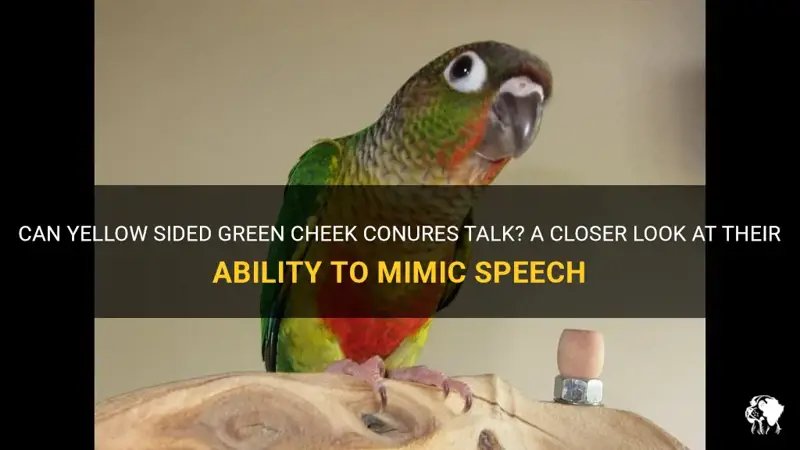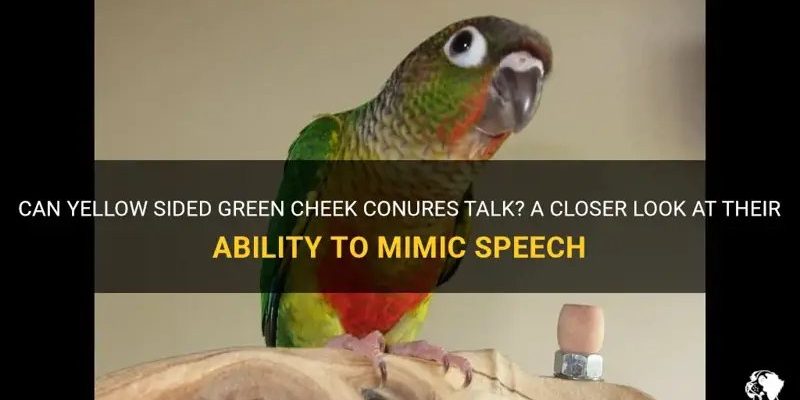
Imagine sitting with a friend at a café, sipping coffee while your conure cheekily repeats the latest catchphrase from your favorite show. That’s the kind of companionship you can build if you invest time in teaching your conure to talk. It’s not just about having a talking pet; it’s about creating a unique bond that enhances both your lives. In this article, we’ll explore everything you need to know about training conures to mimic words, from understanding their vocal abilities to the best practices for training.
Understanding the Vocal Abilities of Conures
Conures are part of the parrot family, known for their intelligence and sociable nature. Unlike some birds, they are quite vocal and love to engage with their human companions. It’s crucial to understand that not all conures will become talkative. Each bird has its personality, and some may prefer to chirp or whistle instead of forming words. However, many conures, such as the Sun Conure or the Green-cheeked Conure, tend to be more vocal and have the potential for learning to speak.
Here’s the thing: talking isn’t just about mimicry; it’s about connection. Conures often mimic sounds they hear frequently, so if you’re consistent and engaging, your conure may surprise you with its vocabulary over time. Think of this as a fun game—you’re teaching your bird to communicate in a way that enhances your bond with it.
The Range of Sounds Conures Can Produce
Conures can produce a variety of sounds, including whistles, squawks, and yes, spoken words. Here are some common sounds you might hear:
- Whistles: Simple tunes that can be fun to teach.
- Chirps: Short, cheerful sounds that express excitement.
- Words: Phrases or single words they hear often.
- Imitations: Sounds from their environment, including electronic noises or other pets.
Keep in mind that the clarity of the words varies. Some conures may say words quite clearly, while others might be more muffled. You’ll just have to listen closely!
Setting the Stage for Talking
Before diving into training, it’s essential to create a comfortable environment for your conure. Stress can hinder their ability to learn new sounds and words. Here are a few tips to set the stage:
1. Choose a Quiet Space: Find a calm area in your home where distractions are minimal. This will help your conure focus better during training sessions.
2. Establish a Routine: Birds thrive on routine. Try to train at the same time each day, so they know when to expect it.
3. Get to Know Your Conure: Spend time bonding with your conure before introducing training. This connection will help them feel secure and willing to learn.
You might be wondering why these preparations are so crucial. A relaxed bird is far more likely to engage and mimic sounds than one that feels anxious or threatened.
Basic Training Techniques for Talking
When it comes to teaching your conure to talk, the method you choose can make a significant difference. Here are a few basic techniques to get you started:
– Use Repetition: Consistently repeat the same words or phrases. The more they hear it, the more likely they are to mimic it. Simple words like “hello” or “goodbye” work well.
– Positive Reinforcement: Each time your conure mimics a word, reward them with a treat or extra affection. This reinforcement encourages them to keep trying.
– Be Patient: Remember, training takes time. Just like us, birds need practice to master new skills. Celebrate small victories along the way!
Let me explain a bit about how birds learn. They’re wired to mimic sounds in their environment, especially those that get a response. Think of this as a conversation—when they hear something exciting or rewarding, they’ll be more inclined to repeat it.
Common Challenges and Solutions
Training your conure to talk can come with its own set of challenges. Here are some common issues and how to tackle them effectively:
– Lack of Interest: If your conure seems uninterested, try using more engaging words or sounds. You could even imitate their favorite noises!
– Distraction: If your conure gets distracted easily, consider shortening training sessions and increasing the frequency. Short bursts of focused training can be more effective.
– Inconsistent Responses: If your bird mimics one day and not the next, it could be due to mood. Birds can have off days, just like us. Stay consistent and patient; they’ll likely come around.
Don’t get discouraged! Every bird is unique, and finding the right approach might take a bit of trial and error.
Using Playtime to Enhance Learning
Another fantastic way to enhance your conure’s speaking skills is to incorporate playtime into your training routine. Birds love to play, and when you merge fun with learning, they’re more likely to engage. Here’s how to do it:
1. Interactive Toys: Use toys that mimic sounds or contain bells. This adds a fun element to their environment and encourages vocalization.
2. Play Games: Consider games like hide-and-seek, where you hide and then call your conure’s name. When they respond, reward them!
3. Singing Together: Sing songs or make rhythmic sounds and encourage your conure to join in. This not only makes them comfortable but also gets them to practice mimicking sounds.
Honestly, this approach turns training into a bonding experience that’s enjoyable for both of you. Your conure will associate learning with fun, and it can make a world of difference.
Maintaining a Talking Conure
Once your conure starts speaking, you might wonder how to keep that vocabulary fresh. Here are some tips for ongoing training and engagement:
– Introduce New Words: Keep things exciting by adding new words or phrases to their vocabulary. Regular updates will keep their interest piqued.
– Frequent Practice: Make it part of your daily interactions. Casual conversations can be a great way for them to retain what they’ve learned.
– Social Interaction: If you have multiple birds, they can also inspire each other to talk. Birds often mimic what they hear from their companions.
Keeping your conure chatty is about consistency and engagement. The more they feel like part of the conversation, the more they’ll want to participate.
Understanding Vocalization Beyond Talking
While many conures can learn to mimic words, it’s essential to appreciate their other forms of vocalization. Birds communicate through body language and sounds, so don’t be surprised if they express themselves in different ways.
Common vocalizations include:
- Happy chirps: These often indicate contentment.
- Squawking: This could signal excitement or attention-seeking.
- Whistles: A sign of comfort and playfulness.
Understanding these non-verbal cues is pivotal. It’s part of the beautiful language that birds use to connect with us.
Final Thoughts on Teaching Conures to Talk
Training a conure to talk can be an exciting and rewarding journey. It’s not just about teaching them to mimic words; it’s about enhancing your bond and creating shared experiences. Remember to be patient, consistent, and above all, have fun with the process. Each little chirp and repeat can add joy to your life.
So grab those treats, find a quiet spot, and get ready for your conure to steal the show with its newfound verbal skills. The journey may take time, but the results will be worth it. Here’s to many delightful conversations with your feathery friend!

